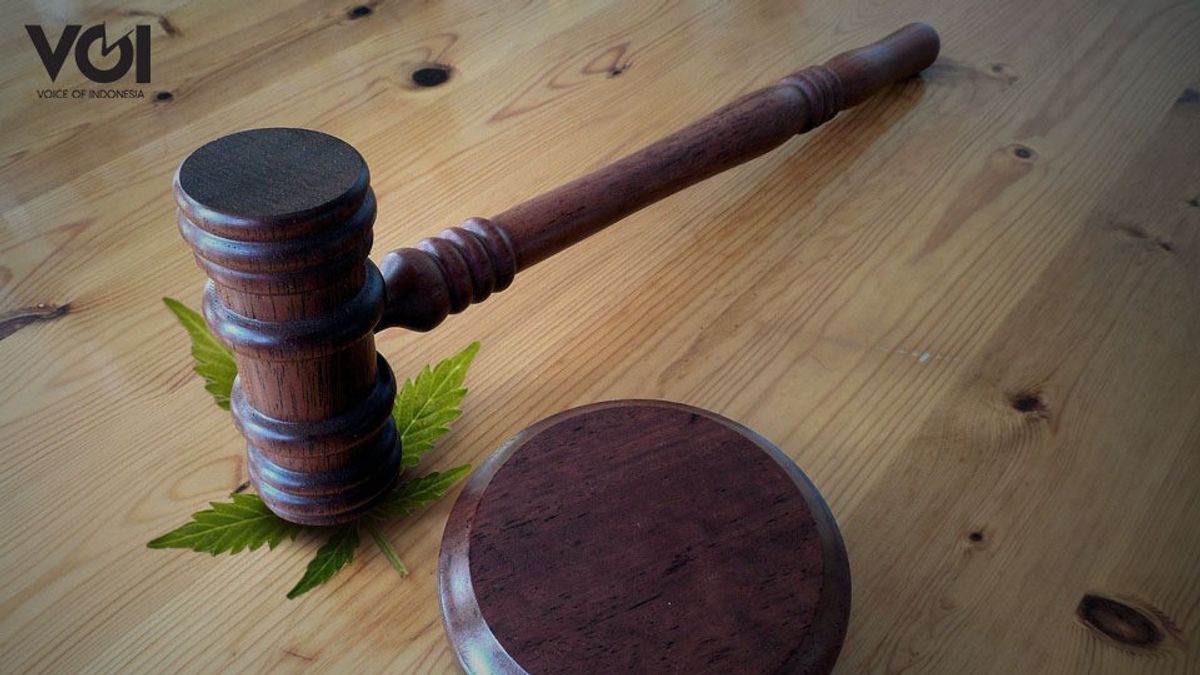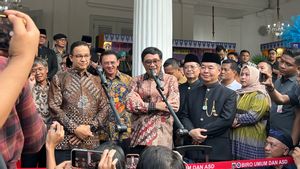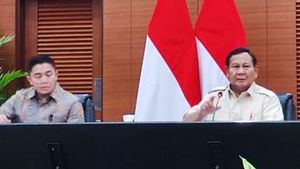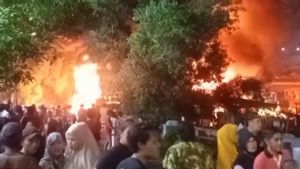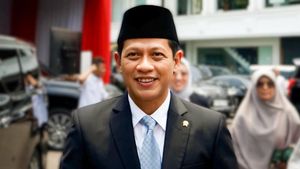We have removed the paranoia about legalizing marijuana by understanding the concept through the article "Because legalization of marijuana is not just a simple matter." Part of VOI's signature Series, "Don't Panic It's Organic". Through this article we will see the birth of Law Number 35 of 2009 concerning Narcotics, a legal product that is a barrier to efforts to legalize marijuana. Not only that. In fact, this law also raises other problems in the effort to eradicate drug abuse itself.
The face of Law No. 35/2009 on Narcotics is shabby. In the context of using the cannabis plant, it has lost its relevance. In the context of eradicating narcotics abuse, Law 35/2009 feels even more absurd. It is not a law enforcement instrument, but a blind sword that does not know justice.
From the start, Law 35/2009 was a problem. He was never born sovereignty by the Indonesian government. Law 35/2009 was born in the United Nations (UN) convention in 1961. At that time, the UN stipulated a legal product that was obliged to be ratified by Indonesia and other UN member countries.
For Indonesia, the ratification automatically revokes the colonial law Verdoovende Middelen Ordonnantie, replaced by Law 9/1976. Since then, convictions against drug users have been started. The rewards are no joke. From prison to tickets to the afterlife. After that, Indonesia again changed the national law on narcotics. The references are the same: the UN convention.
The first amendment was the ratification of the UN Convention on Psychotropics in 1971. The ratification was adopted into the enactment of Law 5/1997 on Psychotropics. Furthermore, armed with the results of the 1988 UN convention on the Eradication of Illicit Narcotics and Psychotropics, Indonesia made changes to Law 5/1997 to Law 22/1997 on Narcotics.
Finally, Indonesia changed Law 22/1997 into Law 35/2009 on Narcotics. This last change - notabene still adhering to the 1988 UN convention - is the legal basis for the eradication of narcotics to this day. In addition, the amendment also establishes the National Narcotics Agency (BNN) as a state institution that deals specifically with the eradication of narcotics abuse. Sentencing is also enforced based on this law.
The irony of lingering thoughtsIn the context of using the cannabis plant, Law 35/2009 is an irony. How come. When other countries determining the results of the UN convention have legalized and used marijuana, Indonesia has not flinched in the outdated mindset of past conventions.
United States (US), for example. As of October last year, the US had re-regulated cannabis policy. 46 US states have legalized the use of marijuana for a variety of purposes. From medical to recreational purposes as defined in Washington DC, Alaska, California, Colorado, Maine, Massachusetts, Nevada, Oregon, to Vermont.
Another veto-wielding country, Britain has also changed the course of its narcotics policy. The UK is now one of the countries with a fairly large market for selling cannabis. Cannabis seeds are the commodity that records the highest demand. Even so, the UK has not fully reformed the existence of marijuana in their Narcotics Act. So, even though it is traded, the use of marijuana cannot be widely practiced.
In Asia, China is one of the most successful countries in using marijuana. Data from the World Intellectual Property Organization (WIPO) notes that the Bamboo Curtain country dominates the cannabis patents with 309 out of 606 patents recorded in WIPO data.
Another Asian country, Thailand has followed China's lead in harnessing cannabis. In the land of the White Elephant, the legalization of marijuana is intended for medical reasons. Its closest neighbor, Malaysia is also on its way to legalizing medical marijuana.
Each country that legalizes marijuana has different goals. However, there is one common thread that underlies the spirit of these countries to regulate their policies on cannabis, that they have opened their eyes, to see that marijuana is not part of narcotics.
It is this change that is being pursued by Maruf Bajammal, an advocate representing the Community Legal Aid Institute (LBHM). Together with a number of other social community organizations that are members of the Civil Society Coalition, Maruf went to the Constitutional Court (MK), proposing a review of Law 35/2009.
One of the points being pursued is removing marijuana from class one narcotics, along with heroin, cocaine, morphine, and opium. Class one narcotics are the most dangerous. In the eyes of the law, all narcotics in this group cannot be used for anything. So, removing cannabis from group one is the first step in utilizing the five-finger plant.
"Then the prohibition of narcotics for any group, for medical purposes, according to us, violates the constitutional right of every citizen to get health services," Maruf told VOI some time ago.
The irony of a blind swordIn principle, the Narcotics Law was created to eradicate illicit traffic and abuse of narcotics. However, its function has shifted to be very repressive. Law enforcement focuses more on the punitive approach. Law becomes a blind sword. Boro-boro has a deterrent effect. Law enforcement based on Law 35/2009 has actually increased the crime rate associated with narcotics abuse.
According to Maruf, the problems that arise are due to inconsistencies in the provisions of the Narcotics Law. Maruf explained that there was something inconsistent in efforts to control narcotics. In the Narcotics Law there is actually a spirit of rehabilitative. However, the implementation of law enforcement shifted instead to prioritize criminal punishment.
Maruf said this can be seen in determining the criteria for who is the user and who is the seller. One of the things that can be seen is how many people have "things". It should be those who become drug users, most likely be taken to a rehabilitation area. Besides that, the rubber article in Law 35/2009 is also a problem. There is even a Supreme Court ruling which states that there is an article on the waste basket in the Narcotics Law.
"But when a person who has just been arrested later by law enforcement, is given very minimal rehabilitation ... Everyone can be subject to that article," said Maruf.
The unclear definition of who uses or uses narcotics also creates another branch of the problem, namely the emergence of transactional laws. This problem relates to only certain people who have access to the rehabilitation approach.
"Those who can access rehabilitation are usually only people who have financial strength or status strength. The transactional ones are there," explained Maruf.
Maruf's words are not empty words. He has handled several cases as previously mentioned. He explained that he had once found a drug user with very minimal evidence, but he was still being prosecuted. Even though there are certain reasons why he uses drugs. However, the authorities completely ignored this matter. Efforts to apply for rehabilitation were raw.
"Because this is the full authority of the investigators to want or not to rehabilitate the alleged offenders of this narcotics crime. There it is (transactional)," explained Maruf.
This blind sword led to another matter. Related to over capacity, for example. Referring to data from correctional institutions, nearly 90 percent of people who become prisoners are dominated by narcotics cases. Ironic.
Next article: "Indonesian Cannabis Culture: From Health to Spirituality"The English, Chinese, Japanese, Arabic, and French versions are automatically generated by the AI. So there may still be inaccuracies in translating, please always see Indonesian as our main language. (system supported by DigitalSiber.id)
